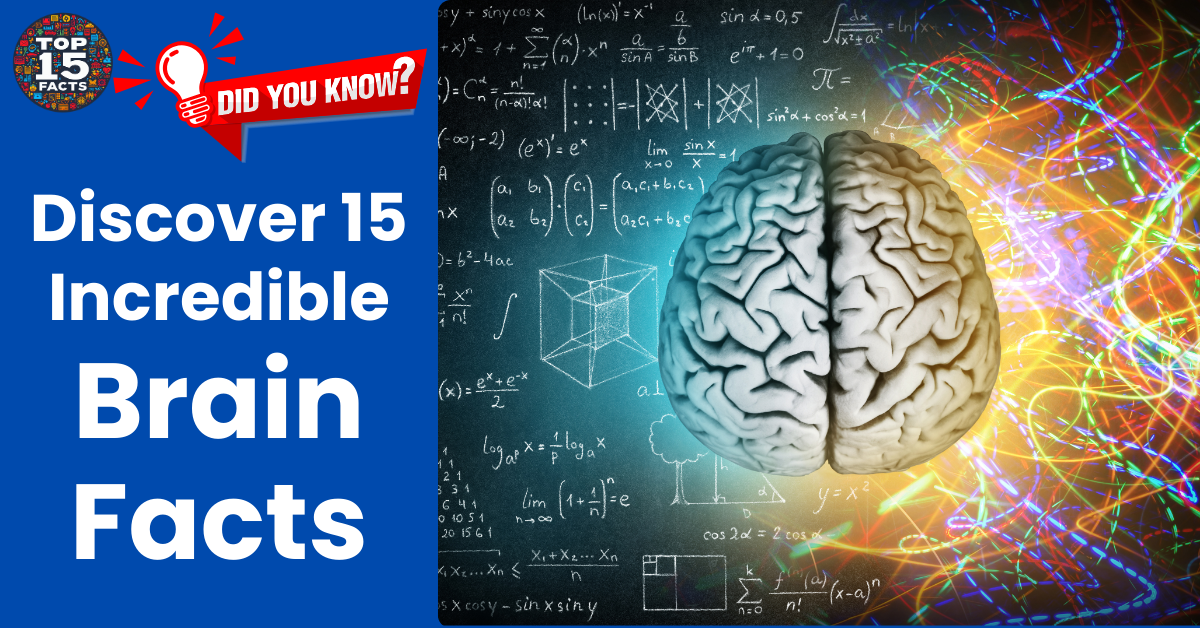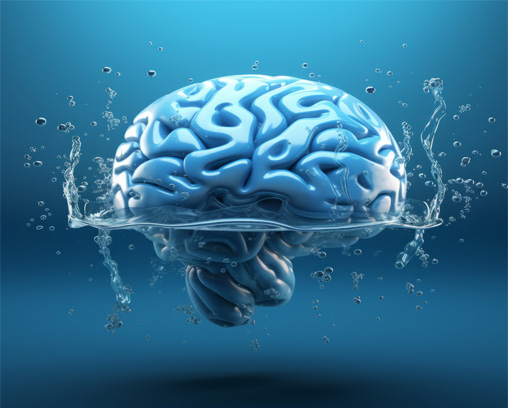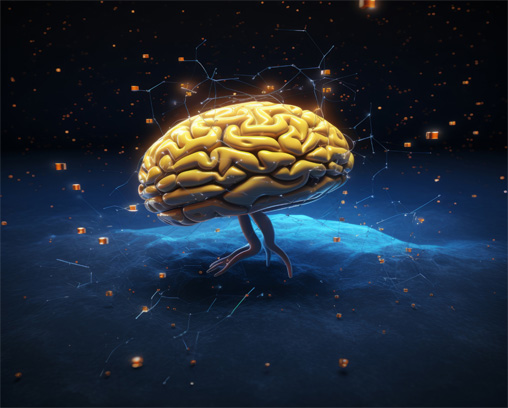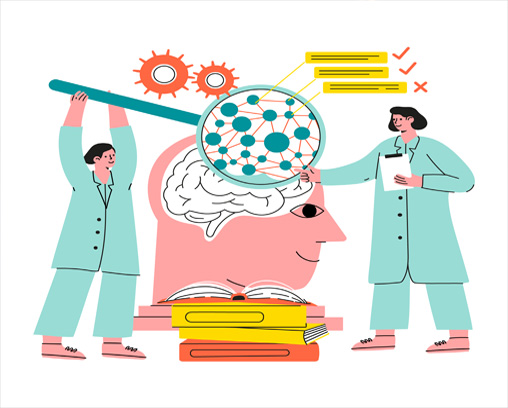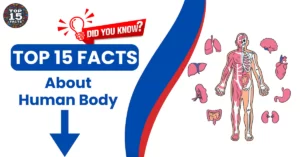The human brain is the most complex and enigmatic organ in our existence. Weighing a mere 3 pounds, it orchestrates everything we do, from the intricate dance of thoughts and emotions to the basic functions of movement and breathing. While scientists have made significant strides in unraveling its mysteries, much remains shrouded in fascinating obscurity. Buckle up and prepare to have your mind blown by 15 incredible brain facts:
15 Incredible Brain Facts
- Your brain generates enough electricity to power a lightbulb.
- The brain can’t feel pain.
- Your brain uses 20% of your body’s total energy.
- Information travels at different speeds within different types of neurons.
- Your brain is 73% water.
- The size of your brain doesn’t equate to intelligence.
- Your brain keeps developing until your late 40s.
- Human brains have more connections than there are stars in the Milky Way.
- Your brain’s storage capacity is virtually unlimited.
- The brain changes shape between summer and winter.
- Fat makes up 60% of the human brain.
- Your dreams are a collection of memories.
- When you learn something new, the structure of your brain changes.
- Your brain can rewire itself in a process called neuroplasticity.
- Humans are the only animals known to blush.
1: Brain Powerhouse:
Imagine your brain as a bustling city that never sleeps. Just like a city needs power plants to keep the lights on and everything running, your brain constantly generates electrical signals to power your thoughts, movements, and every function of your body. Even when you’re resting, countless tiny sparks of electricity are zipping between the billions of cells (neurons) in your brain. While each spark is tiny, if you could harness all that energy, it’d be enough to light up a low-wattage lightbulb!
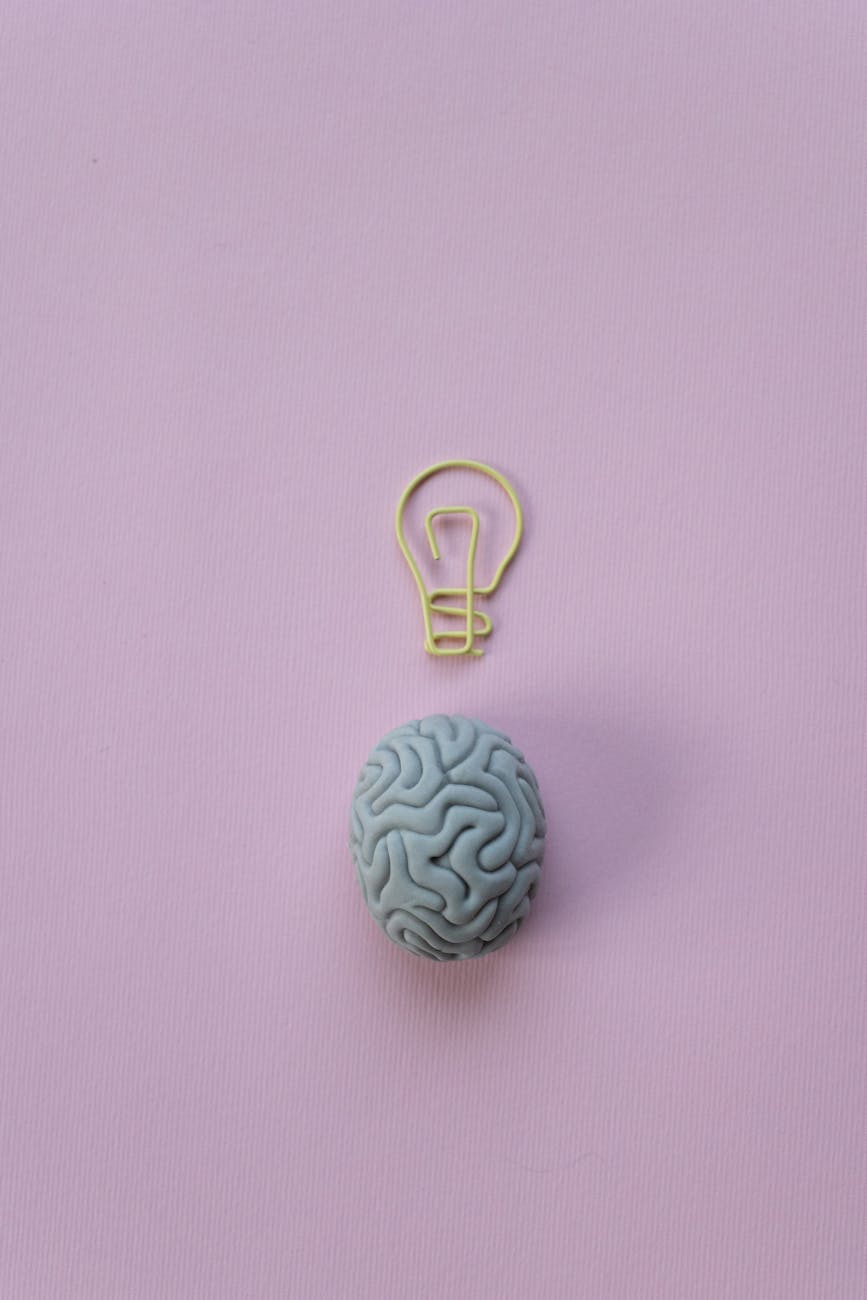
Why Scientists Say This:
- Special Tools: Scientists use sophisticated tools like electroencephalograms (EEGs) to measure the brain’s electrical activity. EEGs record the patterns of electrical signals, looking like wavy lines on a graph.
- Understanding the Brain’s Energy Needs: Scientists use other imaging techniques to measure blood flow and oxygen usage within the brain. These measurements help them estimate how much energy the brain cells are burning to generate all those electrical signals.
2: Painless Processing Center:
Think of your brain as the mission control center of your body. It receives a constant stream of messages from every nook and cranny, including signals about pain. Oddly enough, the mission control center itself doesn’t feel pain! Your brain tissue lacks special pain receptors, which are the sensors that detect painful stimuli and send those “Ouch!” signals to the brain. This might sound strange, but it explains why brain surgeons can sometimes operate on a patient who is awake, with only local anesthesia around the scalp.
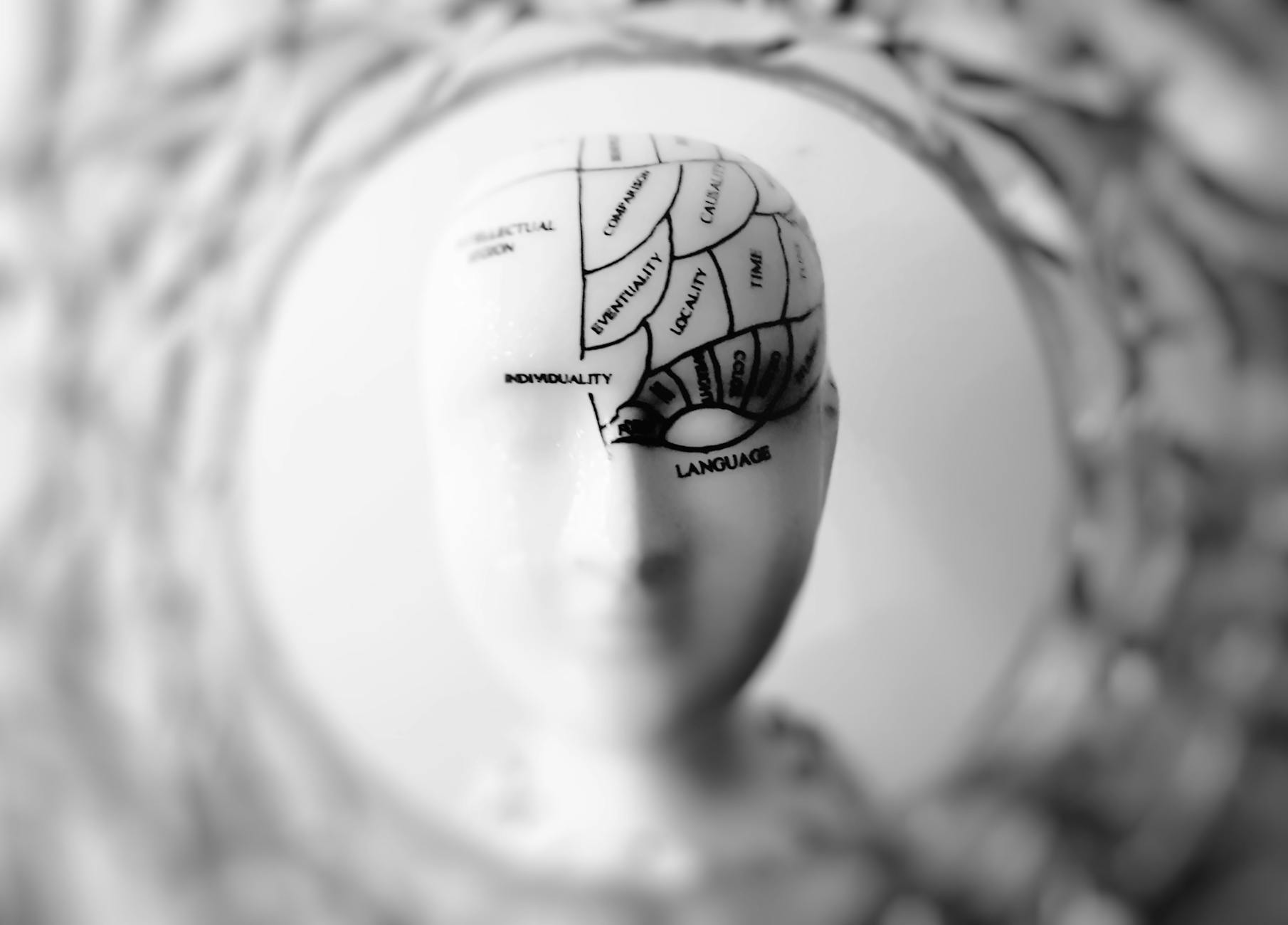
Why Scientists Say This:
- The Search for Receptors: Scientists have meticulously mapped out the different types of receptors found in the brain. While there are receptors for sensations like touch, temperature, and pressure, the kind that triggers pain are missing from brain tissue.
- Observing Brain Surgery: The experiences of patients undergoing awake brain surgery provide real-world evidence. Patients typically only report feeling pressure or other sensations but not the sharp pain that would be expected if their brain tissue itself could feel pain.
3: Energy Guzzler:
Your brain might be relatively small, but don’t let its size fool you – it’s a true powerhouse when it comes to energy consumption! Despite weighing only about 3 pounds, your brain gobbles up a whopping 20% of your body’s total energy supply. Just imagine that a tiny organ responsible for only 2% of your body weight needs a fifth of the energy you get from all the food you eat! This energy is essential for fueling the constant communication between brain cells, which allows you to think, feel, move, and basically do everything.
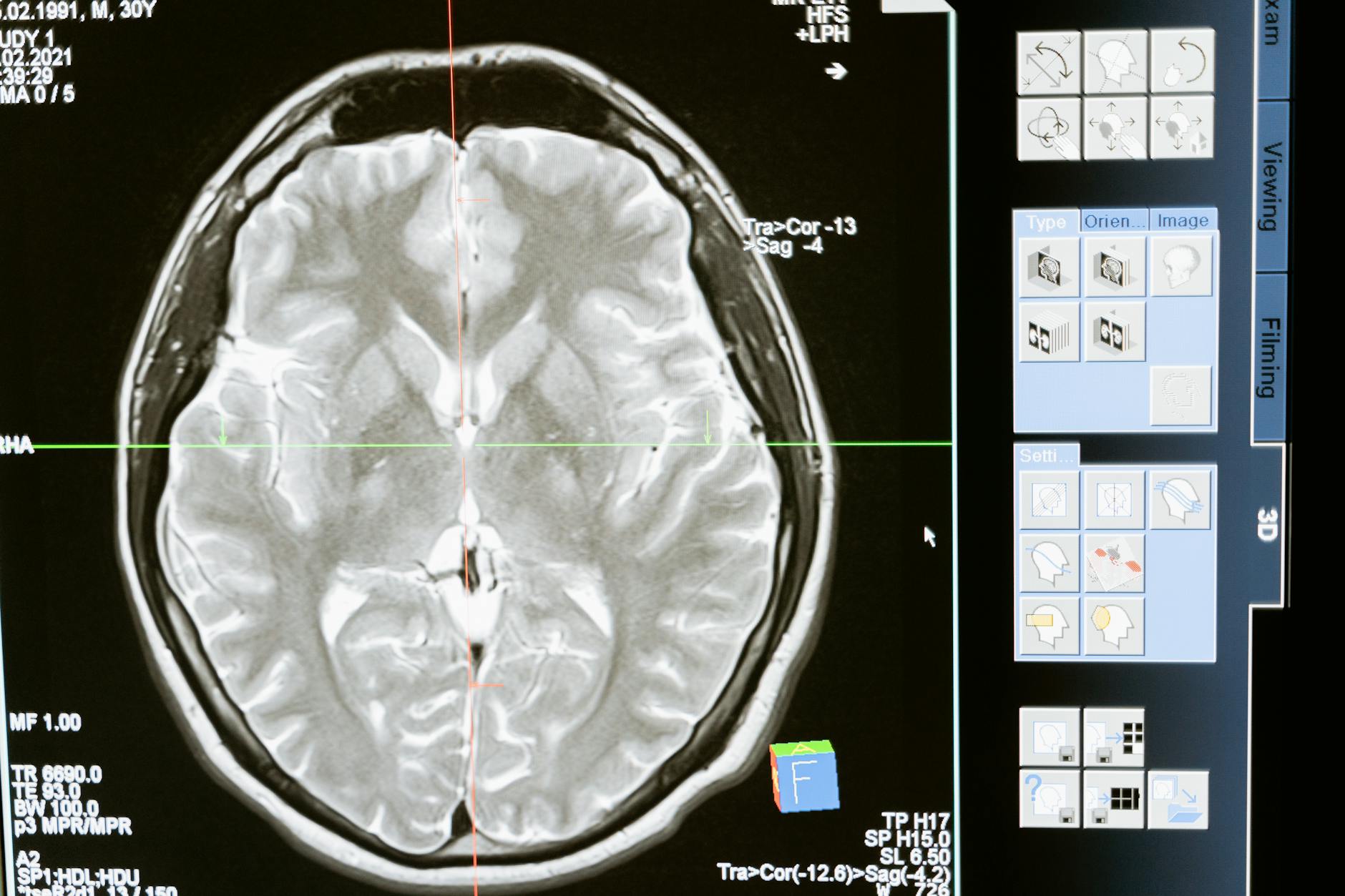
Why Scientists Say This:
- Tracking Energy Usage Scientists use various imaging techniques, such as PET scans to observe which areas of the body are using the most energy at a given time. These scans reveal that the brain consistently ranks as one of the top energy consumers in the body.
- Understanding the Need Brain cells (neurons) constantly require energy to maintain the delicate chemical balance they need to send and receive signals This relentless activity explains the brain’s surprisingly high energy demands.
Read More: 15 Astonishing Facts About the Human Body That Will Change Your Perspective
4: Information Highway:
Think of your brain as a vast network of interconnected roads. Information travels along these roads, carried by your brain cells (neurons), but not all roads are created equal! Some neurons have a special coating called myelin. Imagine this coating like an ultra-smooth pavement for a highway. These “fast-lane neurons” zoom information along at incredible speeds, sometimes reaching up to 250 miles per hour! Other neurons lack this coating, making their roads a bit bumpier. Information travels more slowly along these routes.
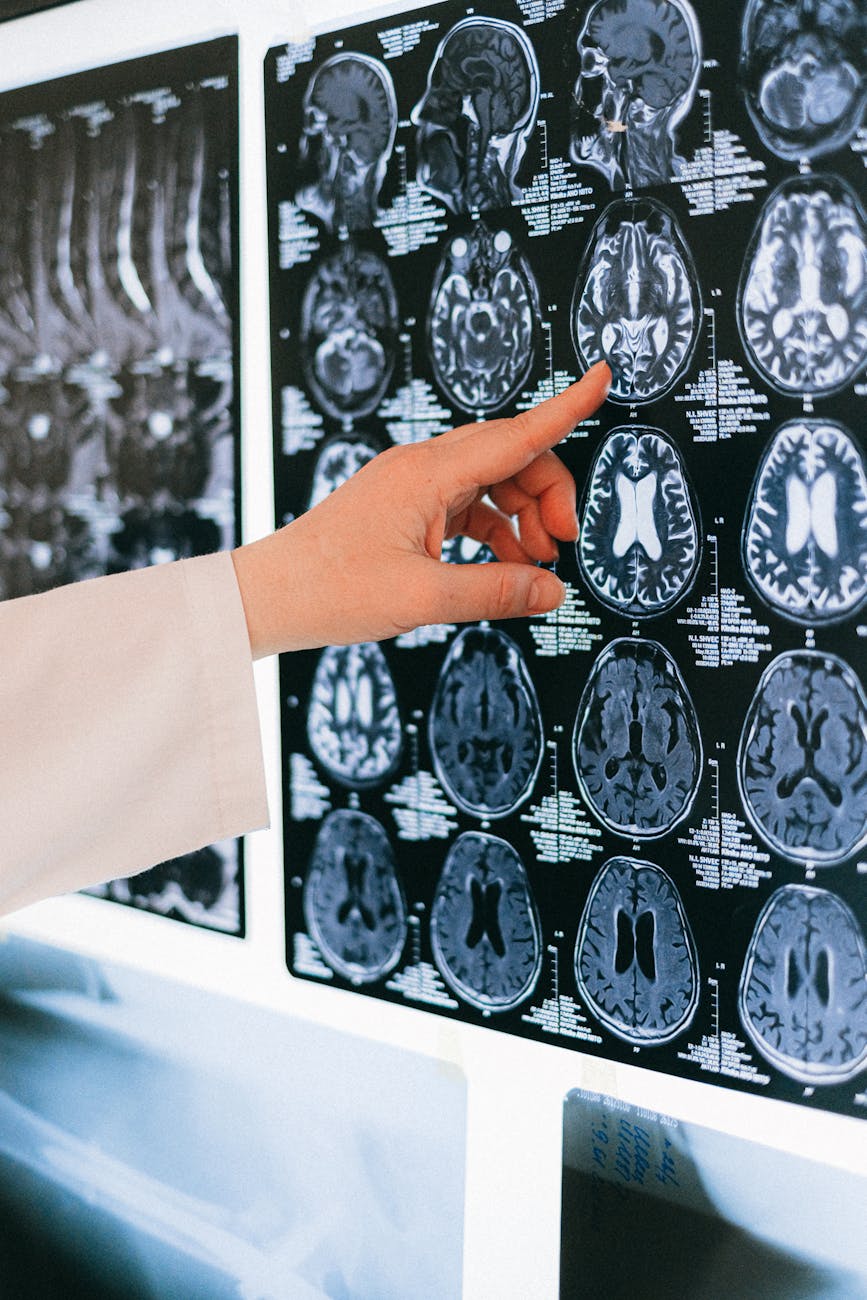
Why Scientists Say This:
- Microscopic Clues: Using powerful microscopes, scientists have directly observed the structure of neurons. They identified myelin as a fatty coating wrapped around the long, threadlike part of certain neurons.
- Speedy Signals: Scientists have also developed ways to measure the speed of electrical signals traveling along individual neurons. These experiments confirm that myelinated neurons transmit information much faster than those without myelin.
5: Mostly Water:
Your brain is surprisingly squishy! That’s because it’s mostly made up of water— about 73% of its bulk. Just like you need to stay hydrated to keep your body healthy, your brain needs a constant supply of water to keep things flowing smoothly. Water plays a crucial role in transporting nutrients, maintaining the right chemical balance, and flushing out waste products. Think of it as the essential liquid that keeps your brain cells happy and your thoughts crystal clear.
Why Scientists Say This:
- Analyzing the Composition: Scientists can directly analyze the composition of brain tissue in the laboratory. These analyses reveal that water is by far the most abundant component.
- Observing Brain Function: Dehydration has a noticeable negative impact on brain function. Studies show that even mild dehydration can impair attention, memory, and other cognitive processes. This highlights the vital role water plays in maintaining optimal brain performance.
6: Size Doesn’t Matter… For Intelligence:
You might have heard that a bigger brain means higher intelligence, but that’s actually a myth! Scientists have discovered that the size of your brain has little to do with how smart you are. What truly matters is the complex web of connections within your brain and how efficiently those connections work. Think of it this way: a huge library with poorly organized books isn’t as useful as a smaller library where everything is meticulously arranged and easy to find. It’s the same with your brain – organization and efficiency of those neural connections are key to intelligence.
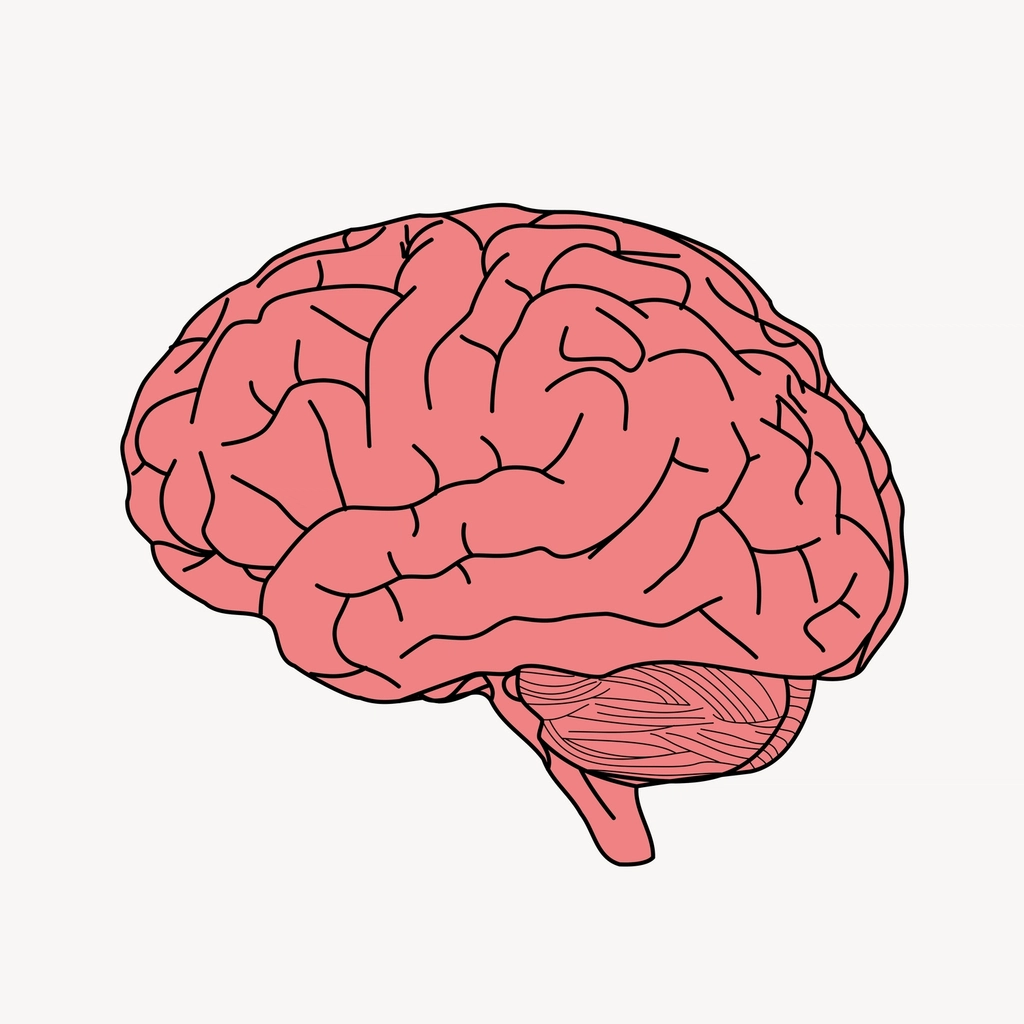
Why Scientists Say This:
- Comparing Brains: Scientists studied the brains of people with a wide range of intelligence levels. They found that brain size alone doesn’t reliably predict how well someone will perform on intelligence tests.
- Looking Within: Advanced brain imaging techniques allow scientists to peek inside the living brain. These studies show that people with higher intelligence often have denser and more efficient networks of connections between different brain regions.
Read More: Top 15 Scientific Breakthroughs that Shaped our World | Discover the Impact
7: A Lifetime Learner:
Did you think your brain stopped growing when you left school? Think again! Your brain has an incredible ability to change and adapt throughout your entire life. It’s like a muscle – the more you use it, the stronger it gets. Different parts of your brain responsible for things like decision-making, problem-solving, and self-control continue to develop and mature well into your late 40s! This means you’re never too old to learn new skills, build new habits, or change your perspective.

Why Scientists Say This:
- Snapshots Over Time: Scientists use brain imaging techniques to study the same people over many years. These long-term studies reveal ongoing changes in brain structure and function throughout adulthood.
- Experience Shapes the Brain: Scientists have observed that learning new things or engaging in mentally challenging activities leads to the formation of new connections in the brain, a process called neuroplasticity.
8: Galactic Connections:
Get ready to have your mind blown! Your brain contains a mind-boggling network of connections between its billions of neurons. Just imagine a map of the night sky – the countless connections within your brain create a network even more complex, surpassing the number of stars in our Milky Way galaxy! This intricate web provides the foundation for every thought, memory, and action you take, showing just how incredibly complex and powerful the human brain truly is.
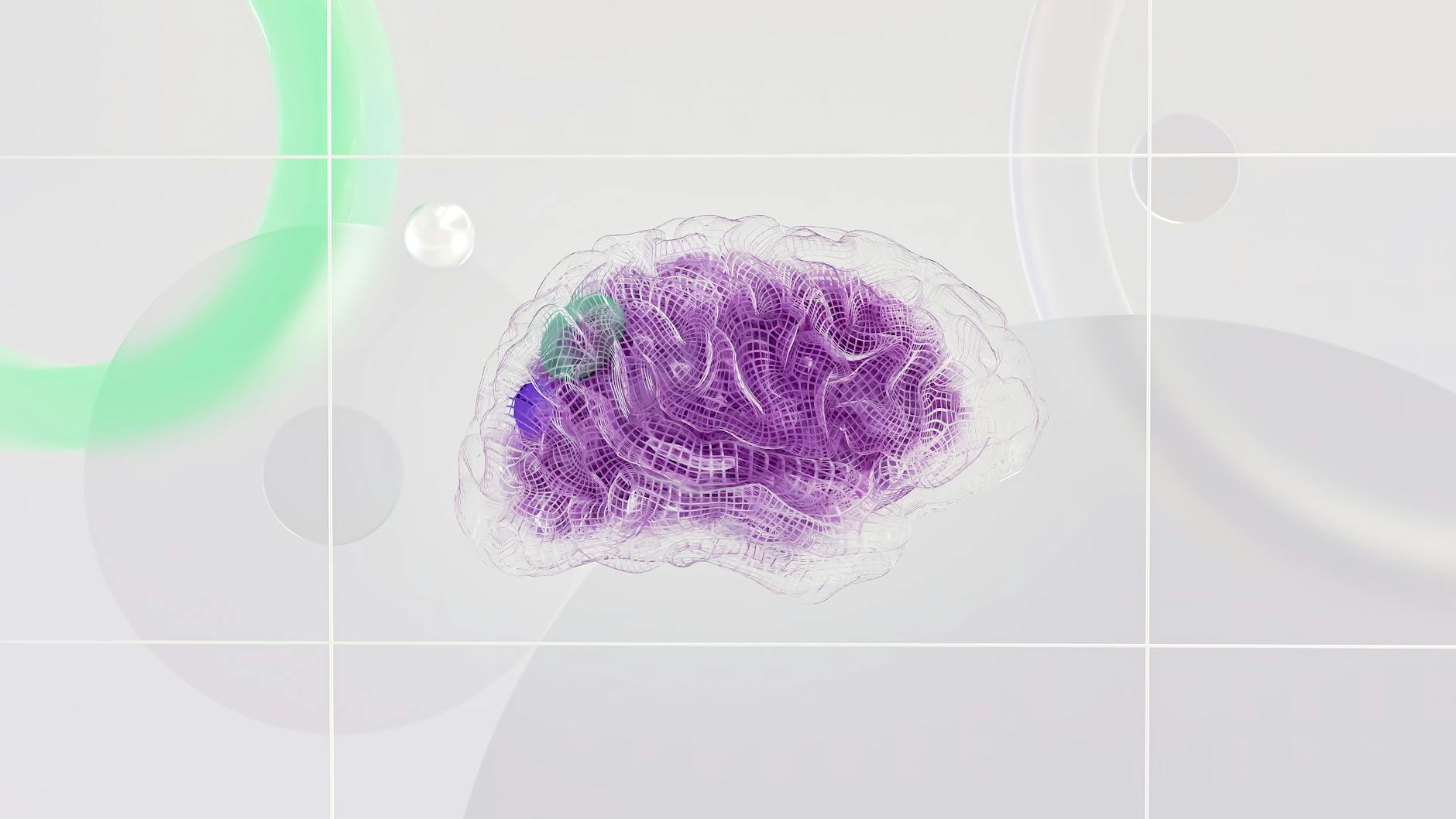
Why Scientists Say This:
- Counting Cells: Scientists have developed techniques to estimate the number of neurons (brain cells) in the human brain. These estimates suggest there are roughly 86 billion neurons packed inside your head.
- Mapping Connections: Using advanced imaging techniques and mathematical modeling, scientists can map the intricate network of neural connections. While it’s impossible to count them all precisely, these studies suggest that the total number of connections likely outnumbers the stars in our galaxy by a vast margin.
9: Unlimited Storage:
Have you ever worried that your brain might run out of space to store all your memories? Worry no more! Scientists believe your brain has an almost limitless capacity to store information. It’s like a massive storage room with shelves that never end. While the exact way your brain stores all those facts, events, and experiences is still a bit mysterious, it seems that forming and strengthening connections between neurons is what allows you to hold onto memories for a lifetime.
Why Scientists Say This:
- The Search for Limits: Despite intense study, scientists haven’t found any clear limits on how much information the human brain can store.
- Flexible Connections: The vast number of potential connections between brain cells and the ability to strengthen these connections through repeated use suggest that our memory capacity is extremely adaptable.
Read More: 15 Ways Artificial Intelligence is Transforming Our World
10: Shape Shifter:
Did you know that your brain subtly changes shape throughout the year? That’s right! Scientists have discovered slight fluctuations in its size between summer and winter months. It’s a small change but a fascinating one! It’s almost like your brain has its own seasons Don’t worry, these changes are normal and highlight the remarkable adaptability of this incredible organ.
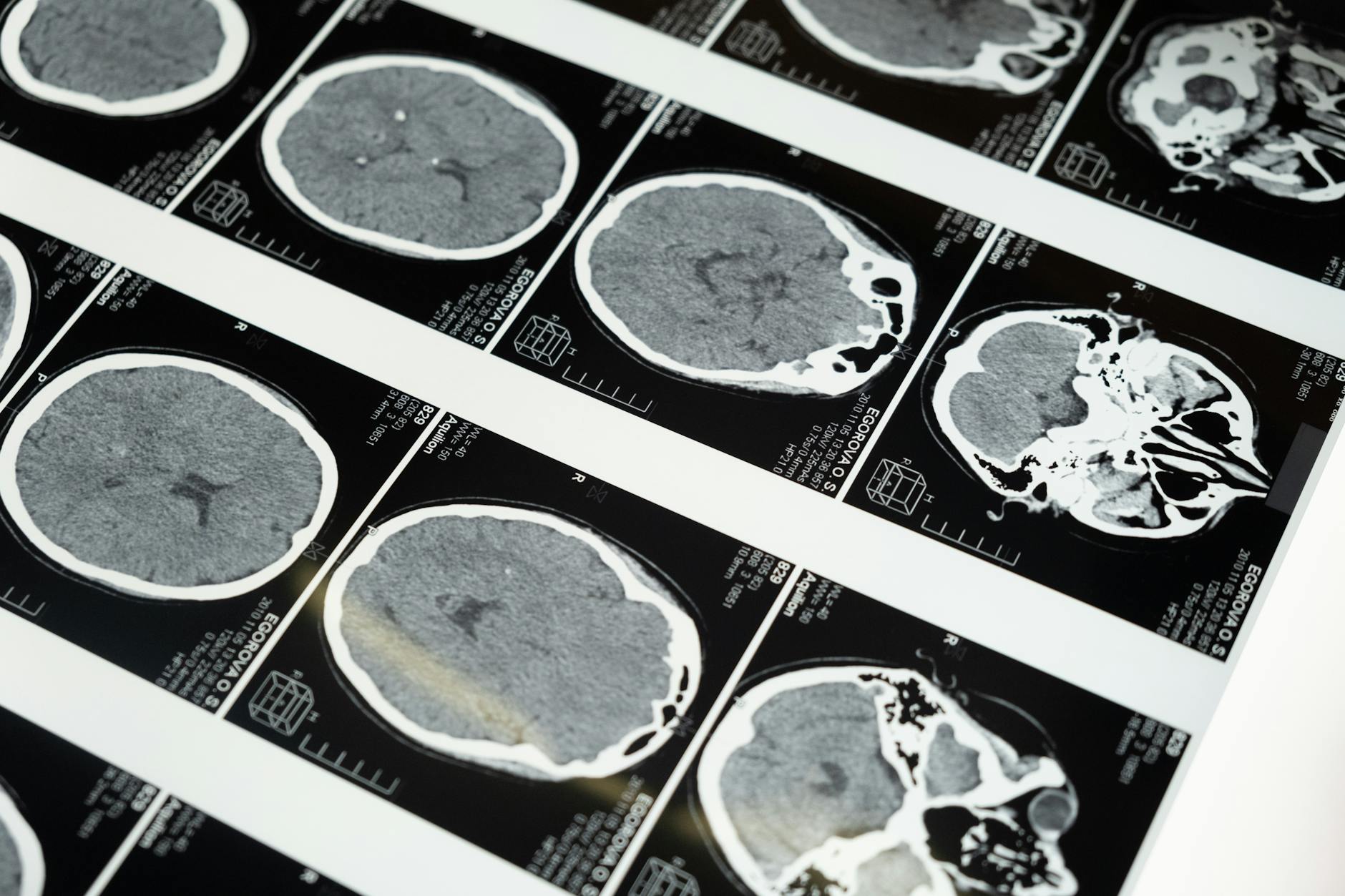
Why Scientists Say This:
- Detailed Imaging: Advanced brain imaging techniques, like MRI scans, allow scientists to measure the volume of the brain with incredible precision.
- Tracking Over Time: Studies that track people across multiple seasons reveal subtle changes in brain size, with a tendency to be slightly larger in the winter and smaller in the summer.
11: Fats Fuel the Mind:
Forget those fad diets that say fat is bad! When it comes to your brain, healthy fats are essential. About 60% of your brain is actually made of fat. These special fatty acids (think of the ‘healthy fats’ you find in fish, nuts, and avocados) are the building blocks for your brain cells. They help keep communications lines between neurons open for business and support overall brain health. Eating a balanced diet with enough of these good fats is like giving your brain a premium power boost!
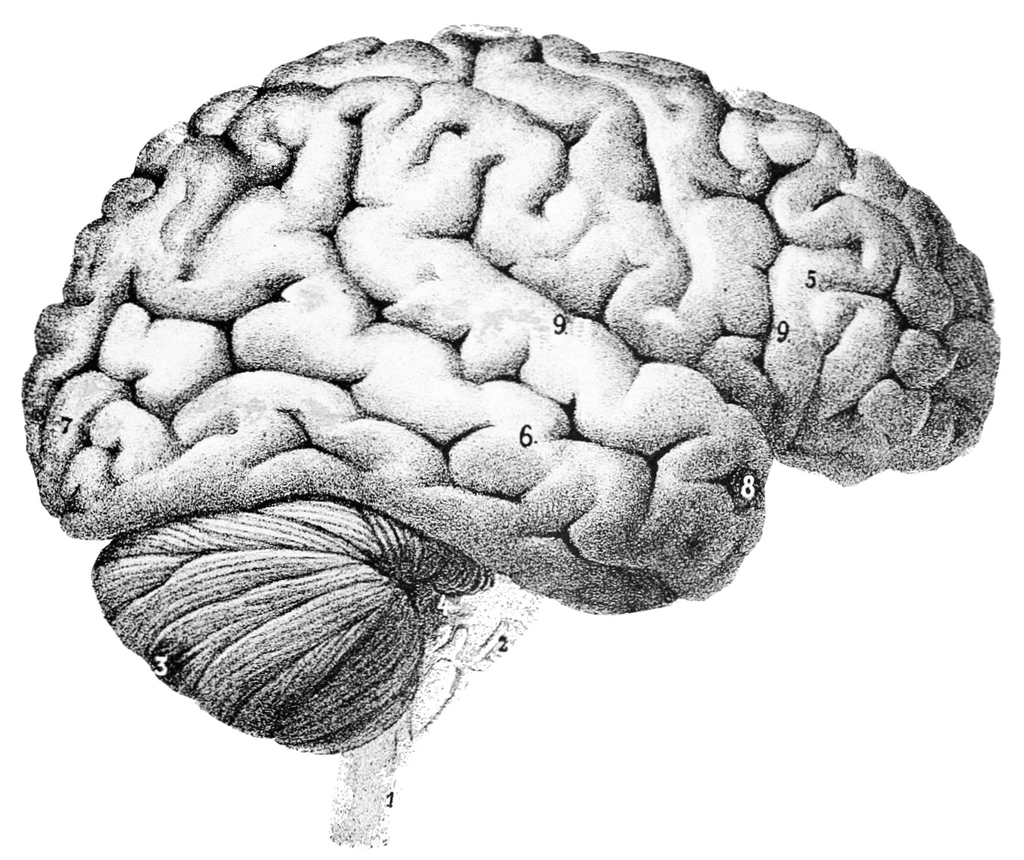
Why Scientists Say This:
- Analyzing the Brain: Scientists can directly analyze the composition of brain tissue. These analyses show that fats are a major component.
- Observing the Impact: Studies show that diets rich in healthy fats, specifically omega-3 fatty acids, are linked to improved cognitive function and may even protect against age-related brain decline.
12: Dreamscape Deciphered:
Those vivid and sometimes bizarre adventures you have while sleeping? They’re called dreams! Dreams aren’t just random flickers of your imagination. Scientists believe they’re a fascinating mix of memories, emotions, and thoughts all woven together in unique ways by your brain. Imagine your brain as a master storyteller, using fragments of your life to create new and sometimes strange narratives while you sleep. While we still don’t understand everything about dreams, they offer a window into the incredible creative power of your mind.

Why Scientists Say This:
- Peeking Into Sleep: Brain imaging techniques allow scientists to observe which areas of the brain are active during different stages of sleep. Studies show that brain regions involved in memory, emotion, and creativity become particularly active during dreaming.
- The Meaning of Dreams: Scientists and psychologists analyze dream content to understand potential links to our waking lives. For instance, recurring themes or symbols in dreams might offer insights into unresolved emotions or subconscious worries.
Read More: Discover the Latest Tech Innovations | Stay Ahead of the Curve
13: Transformation Through Learning:
Every time you learn something new, whether it’s mastering a skill, memorizing facts, or even just having a meaningful conversation, you’re actually changing the physical structure of your brain! Think of your brain like a network of roads. When you repeatedly travel certain paths, those roads become wider and smoother, making travel easier the next time. The same happens in your brain – frequently-used neural connections become stronger and more efficient. This ability to change and adapt is called neuroplasticity, and it’s what makes lifelong learning possible!
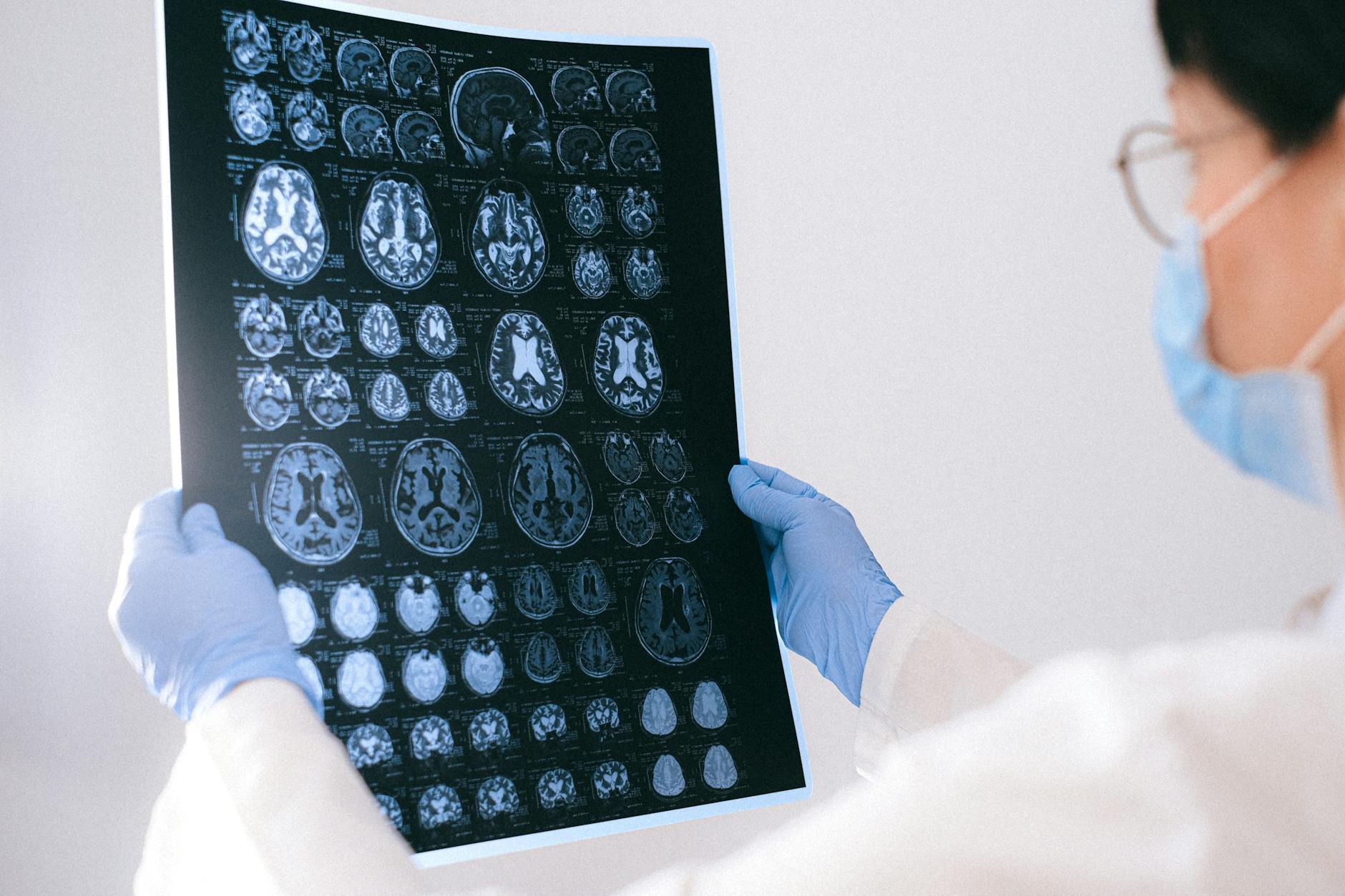
Why Scientists Say This:
- Seeing Changes In Action: Brain imaging technologies allow scientists to observe how the brain changes with learning. They see new brain cell connections forming and existing ones getting stronger in response to new experiences.
- Rewiring After Injury: Neuroplasticity isn’t just about growth, but also about adaptability. Studies on people who have experienced brain injuries show how the brain can rewire itself, finding new routes to compensate for damaged areas.
14: Self-Rewiring Prodigy:
Imagine your brain has an incredible superpower – it can reorganize itself to repair damage, learn new things, and adapt to changing situations. This amazing ability is called neuroplasticity. Think of it as your brain constantly rewiring itself. Maybe a pathway is damaged, like a fallen tree across a road – with neuroplasticity, your brain can create a detour, finding a new route. This is how people can recover after brain injuries or why you’re able to pick up new skills even as you get older.
Why Scientists Say This:
- Observing Change: Advanced brain imaging techniques allow scientists to directly observe how the brain’s structure and connectivity change in response to experiences, injuries, or targeted training.
- Recovery Stories: Studies on individuals who have suffered brain damage show remarkable cases of recovery. This is due to the ability of other brain regions to take over functions, a direct example of neuroplasticity in action.
15: Blushing Exclusivity:
Ever found yourself blushing uncontrolibly, wishing the floor would swallow you? Turns out, humans are the only animals known to do this! This automatic reddening of the face is often triggered by feelings of embarrassment, social anxiety, or those moments when you just wish you could disappear. While it can feel awkward, scientists believe blushing evolved as a unique social signal. It’s a way of wordlessly saying, “Oops, I might have messed up,” which can foster understanding and empathy from those around you.

Why Scientists Say This:
- Animal Observations: Researchers have carefully observed a wide range of animals in social situations but haven’t found a similar blushing response in any other species.
- The Social Function: Theories suggest that blushing might have evolved in humans because it demonstrates a heightened awareness of social rules and a desire to be accepted within a group.
Read More: 15 Spine-Chilling Facts About Famous Ghost Stories
Conclusion:
The human brain is a marvel of complexity and adaptability. Despite centuries of research, we’ve only begun to unlock its many mysteries. These incredible facts offer just a glimpse of its power: storing endless memories, constantly rewiring itself, acting as a massive energy-guzzling power station, and enabling things as unique as blushing! The more we learn about the brain, the more we appreciate our own potential for growth, learning, and the ability to understand the world around us.
15 FAQs ( Frequently Asked Questions)
-
Can I improve my brain health?
Absolutely! Just like your body, your brain benefits from a healthy lifestyle. Here’s how:
* Eat Well: A diet rich in fruits, vegetables, and whole grains with good fats (like those in fish or nuts) nourishes your brain.
* Exercise Regularly: Physical activity increases blood flow to the brain, promoting new cell growth.
* Challenge Your Mind: Learn new skills, solve puzzles, and engage in mentally stimulating activities to keep those neural connections strong.
* Prioritize Sleep: Your brain consolidates memories and clears out toxins while you sleep. -
Does age affect my brain?
Our brains naturally change with age, but decline isn’t inevitable! Staying mentally and physically active can protect your brain and keep it sharp as you get older.
-
Are there technologies to study the living brain?
Yes! Scientists use amazing tools:
* MRI & fMRI: These create detailed images of brain structure and activity.
* EEG: Measures electrical signals in the brain, used to study sleep and brain disorders.
* TMS: Non-invasive magnetic stimulation can temporarily alter brain activity, helping study different brain regions. -
Where can I find reliable information about the brain?
Look for trusted sources:
* University Websites: Search for “.edu” domains – often have sections on brain research.
* Reputable Science Websites: Like ScienceDaily, Scientific American, or Discover Magazine
* Brain-Specific Organizations: BrainFacts.org or the Dana Foundation. -
Can Brain Games Really Make Me Smarter?
Brain games can improve specific skills you practice but won’t necessarily boost your overall intelligence. Think of them as targeted exercises for your brain. Real, well-rounded mental stimulation, like learning new things outside your comfort zone, likely has a broader positive impact.
-
Is there a Difference Between Male and Female Brains?
There are subtle structural differences between male and female brains on average, but these differences don’t translate to neatly defined ‘male’ or ‘female’ ways of thinking. Individuals show a wide variety of strengths and abilities, regardless of their sex.
-
Can I Improve My Memory?
Yes! While there’s no magic pill, certain strategies can help:
* Focus and Spaced Repetition: Avoid distractions and repeat information over time (like with flashcards) to help it stick.
* Mnemonics: Create acronyms, rhymes, or visual associations to aid recall.
* Lifestyle Matters: Exercise, sleep, and good nutrition support overall brain function, including memory. -
What Happens to My Brain When I’m Stressed?
Chronic stress can negatively affect the brain. It shrinks areas involved in memory and learning while enlarging areas associated with fear and anxiety. That’s why managing stress is important for both brain and overall health.
-
How Do Drugs and Alcohol Affect the Brain?
Substances like alcohol and drugs hijack the brain’s reward system and interfere with normal communication between neurons. Long-term use can lead to changes in brain structure and function, contributing to addiction and other mental health problems.
-
Can meditation change my brain?
Research suggests yes! Meditation practices and mindfulness exercises have been shown to promote changes in brain regions related to attention, emotional regulation, and self-awareness. These changes can lead to improved focus, stress management, and overall well-being.
-
What are some common myths about the brain?
Bust those myths! Some common misconceptions include:
* We only use 10% of our brains: This is false. We use nearly all our brains, just different parts at different times.
* “Left-brained” vs. “right-brained”: While the two sides of the brain have some specialization, most complex tasks require both working together.
* Bigger brain = higher intelligence: Not true. Brain organization and neural connections matter more than size. -
Are there things that can damage my brain?
Yes, protecting your brain is crucial. Here’s what to avoid:
* Head Injuries: Traumatic brain injuries can have long-lasting consequences. Wear helmets, avoid risky activities.
* Substance Abuse: Drugs and excessive alcohol harm brain cells and impair function.
* Poor Lifestyle: Lack of sleep, unhealthy diet, and lack of exercise negatively impact the brain over time. -
What are some promising areas of brain research?
Scientists are making exciting advances on numerous fronts:
* Brain-Computer Interfaces: Research aims to help those with paralysis communicate or control devices using their minds.
* Alzheimer’s Disease Treatments: Focus on slowing or preventing the devastating impact on memory.
* Understanding Consciousness: A grand challenge, but scientists are studying its neural basis. -
Why do I dream?
Scientists don’t have a definitive answer! Leading theories are:
* Memory Processing: Dreams may help sort and store important memories, discarding the irrelevant.
* Emotion Regulation: Dreams may provide a safe space to process complex emotions.
* Creativity Booster: The randomness of dreams may spark new ideas and connections.
* Threat Simulation: A way to practice responding to dangerous scenarios in a low-risk setting. -
Can I control my dreams (lucid dreaming)?
To some extent, yes! Lucid dreaming is when you become aware that you’re dreaming while still asleep. With practice, some people learn to exert some control over their dream environment or actions.

